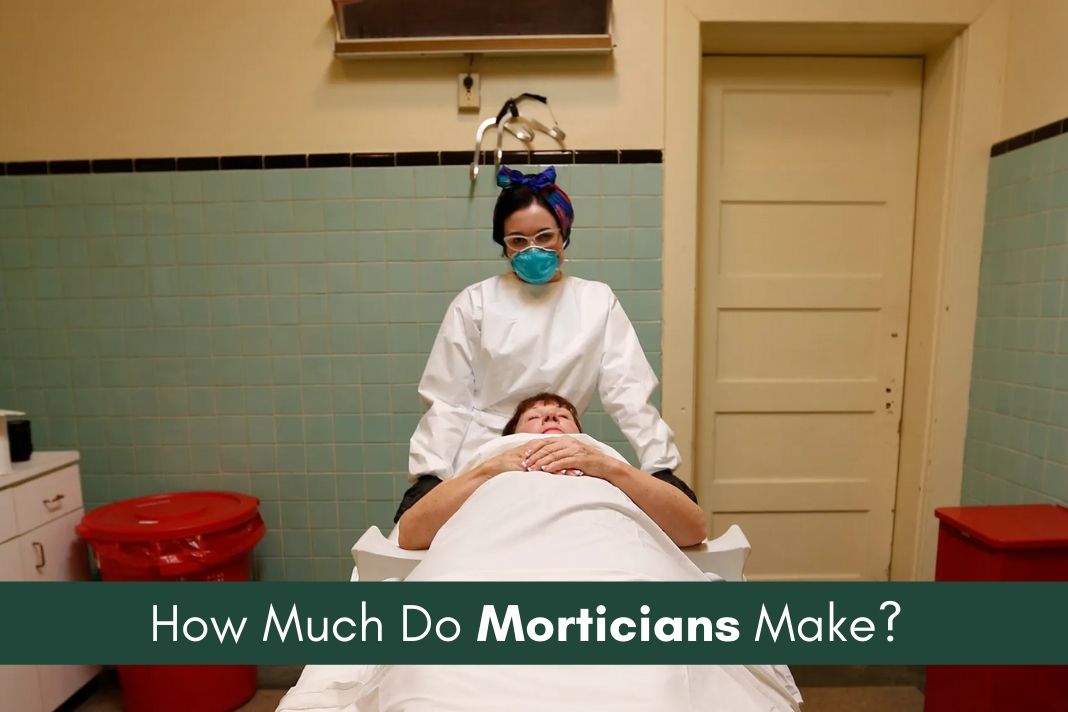
Dealing with death regularly takes a particular type of person – someone who is full of compassion and can separate their own emotions from the profession. Morticians, also known as funeral directors, fill this position, assisting a group plan the modalities of the funeral of their loved one and guiding them through a turbulent time. A mortician pay varies depending on various factors, including location and years of experience.
Job Description
Walking the family through the steps of planning a funeral, the mortician offers not only comfort but also knowledge. They help prepare the funeral details, assisting families in choosing everything from a casket and burial plot to arranging the details of the service and viewing. If a family prefers for cremation, the mortician handles that process. If required, many morticians also manage end-of-life paperwork, working with the family members to transfer any life pensions, insurance policies, or annuities.
When morticians gain possession of a body, they start the ceremonial rites. Firstly, they disinfect the body using a disinfectant. They also drain all the blood from the blood vessels of the body. Morticians then fill the blood vessels with dyes and embalming fluid to preserve the condition of the body, delay any infection or decay, and help the deceased look healthy for a viewing or funeral service. They also position the deceased in the casket to help it look more presentable.
Education Requirements
Earning a mortician degree generally involves a 2-year associate’s degree, passing a state exam, plus supervised training. The ABFSE (American Board of Funeral Service Education) has accredited more than sixty mortuary science and funeral service programs.(1)
Most are a two-year program that includes classes in grief counseling, business law, and funeral service. Before having full-time employment, a mortician also undergoes training – typically a 1- to 3-year apprenticeship or internship – under a licensed mortician or funeral director. This can happen during schooling or after that. Once that has been done, they can take their state’s licensing exam; exact exam requirements differ from state to state.
Industry
Generally, morticians work in a funeral home or other similar settings. In mini funeral homes, the mortician may also take on additional roles such as administrative assistant, embalmer, and marketing director. After a person passes, he is typically buried within a few days, so morticians frequently work on tight deadlines that have a rapid turnaround.
Morticians may also juggle viewings or multiple funerals on the same day. Most work full-time and must be on-call, ready to work weekends and evenings, as required. There are few hazards working with the deceased, as long as the mortician takes the proper precautionary measures, and follows local health guidelines.
[ Read: How to Become a Mortician ]
How Much Do Morticians Make
The pay rate for morticians varies depending mostly on location. As of May 2019, the median annual pay for morticians was $58,310, which means that half make more than this, while the other half make less. When looking at funeral director salary numbers, the lowest ten percent earned less than $29,370, on the other hand, the highest ten percent made more than $89,880.
Connecticut has the most top pay for morticians, coming in at $110,400 per annum. An embalmer pay in California is on the lower end, about $48,620 annually. Most states require continuing education for morticians. Several organizations – like the Cremation and Funeral Association, the NFDA (National Funeral Directors Association), and the International Cemetery– offer special designations that morticians can get to increase their salary potential.
Careers in Europe: An entry-level mortician (1-5 years of experience) earns an average salary of 42.865 €. On the other hand, a senior level mortician (9+ years of experience) makes an average salary of 74.952 €
Careers in Asia: The average mortician salary in India is ₹10,13897 or an equivalent hourly rate of ₹487
Job Growth Trend
Compared to all occupations that have a seven-percent growth rate, mortician jobs will grow at a slower pace, at about four percent over the next ten years. With baby boomers planning for end-of-life needs or passing away, the demand for morticians will remain steady, particularly for those willing to relocate to locations where significant job openings exist.
Recommended Articles ;
How much Medical Assistants really make
Steps to Become a Medical Examiner




